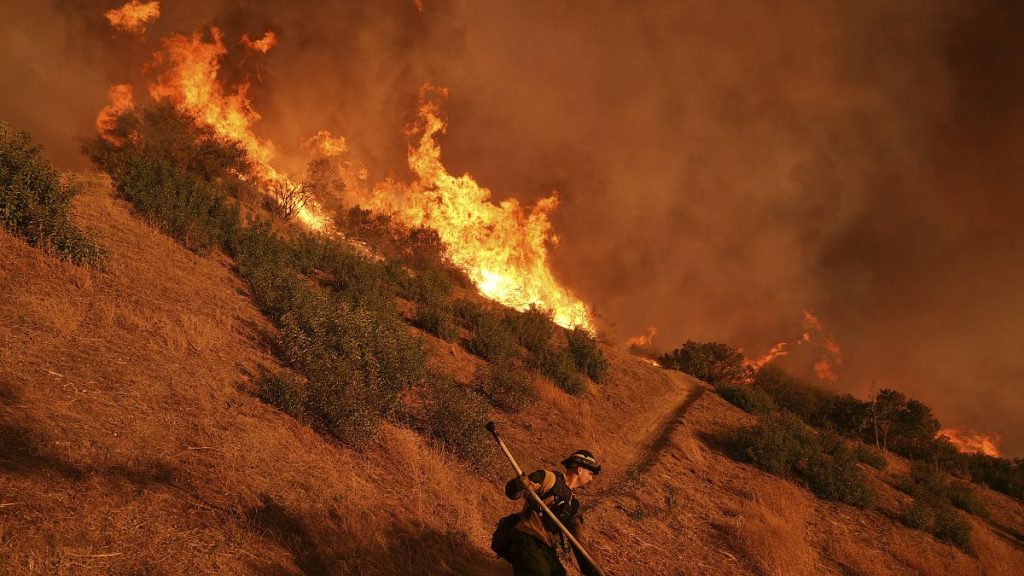The recent wildfires raging across California, impacting regions like Palisades, Eaton, Kenneth, Sunset, and Hurst, have triggered a devastating wave of destruction, claiming lives, rendering thousands homeless, and inflicting billions of euros in property and infrastructure damage. Early estimates from AccuWeather Inc. place the total economic loss between a staggering $250 billion and $275 billion, potentially marking this disaster as the costliest in US history. While the immediate impact is concentrated within California, the financial repercussions extend far beyond its borders, reaching major European reinsurance companies who are bracing for significant losses due to mounting claims.
The financial fallout from these fires is not confined to US entities. European reinsurers, including Swiss Re, Munich Re, Hannover Re, and SCOR, are anticipating substantial losses, estimated to collectively reach around $1 billion. While these figures represent significant sums, analysts suggest they fall within the reinsurers’ allocated budgets for major losses, likely impacting 2025 earnings only if the final toll exceeds these pre-established reserves. This relatively contained impact is attributed to several factors, including the predominantly residential nature of the affected properties, as opposed to industrial or commercial, and the higher reinsurance attachment points compared to previous wildfire events.
However, the wildfires have reignited concerns about a deepening insurance crisis in California. The state’s insurance market has been grappling with challenges since the devastating 2018 Camp Fire, which resulted in significant losses for insurers. This led several major insurance providers, including Allstate and State Farm, to cease issuing new property insurance policies or renewing existing ones within California. This retreat was primarily driven by the escalating risk of catastrophic events, exacerbated by climate change and increased migration to wildfire-prone areas, coupled with rising inflation.
The confluence of these factors has created a precarious situation for California homeowners. Insurers have struggled to raise premiums sufficiently to offset the escalating risk, further fueling their reluctance to offer coverage. This has led to a growing number of uninsured homeowners in the state, estimated to be over 800,000, concentrated in high-risk counties. The departure of several insurance companies from the Californian market further complicates the situation, potentially leading to a scarcity of affordable insurance options, further exacerbating the risk of a full-blown insurance crisis.
Despite the current challenges, there are some glimmers of hope. Analysts point out that both insurers and reinsurers are better equipped to handle wildfire-related risks now than they were during the 2018 Camp Fire. This improved resilience stems from higher reinsurance attachment points, offering a stronger safety net, and the fact that the current fires predominantly impact residential properties, to which reinsurers typically have lower exposure. Additionally, the FAIR Plan pool system, which distributes losses among multiple insurers, offers some relief in affected areas like Palisades.
However, the recent fires underscore the persistent vulnerability of the California insurance market and the precarious position of many homeowners. While short-term financial impacts on reinsurers appear manageable, the long-term consequences for California’s insurance landscape remain uncertain. The combination of increasing wildfire risk, escalating costs, and insurer reluctance poses a significant challenge, potentially leading to a shortage of affordable insurance options and further exposing homeowners to financial devastation in the event of future disasters. The current situation necessitates a concerted effort from stakeholders, including insurers, regulators, and policymakers, to address the underlying issues and ensure the long-term stability and accessibility of the insurance market in California. Finding a sustainable balance between risk mitigation, affordable premiums, and adequate coverage is crucial to protecting homeowners and preventing a deepening insurance crisis in the state.














